The decision to purchase your own horse or pony is of course a deliberate and beautiful decision, but can also bring a lot of questions. You can’t buy a horse or pony “just like that”. Buying a horse is not only expensive, but you have to take several things in mind and be aware of before you buy your dream horse.
To have your own horse, is a dream come true for many people. To make this dream come true and stay true, there are a number of things that you have to take into account if you are planning to buy a horse or a pony. How can you prepare well for the purchase of a horse or pony, to what kind of things you have to pay attention to and more useful tips i would like to share with you in this article.
The decision to buy a horse
Once the decision is made, a lot of things will come to you. For example, which horse breed would you like to buy? And which breed suits you as a rider? You also have to take into account the level you have as a rider. Are you a beginner? Or do you have more experience in riding horses?
First of all you have to decide which breed fits you as a rider. You may be very charmed by the Arabian race, but if you don’t have experience with no ambition to train on a daily basis, then you could argue that such a breed is already falling.
Horses that are “high in blood” (such as the Arabian race or Thoroughbreds) have a lot of temperament and therefore require a lot of daily exercise.
You also have to take into account that these warm-blooded breeds are much sharper in character than for example cold-blooded breeds.
Of course there is a difference in warmbloods. It’s not that every warm-blooded horse is unmanageable for a starting rider. The higher the bloodline, the sharper the character.
Some examples of warm-blooded breeds are:
- English thoroughbred
- Thoroughbred Arab
- KWPN (Royal Dutch Warmblood Horse)
Some examples of cold-blooded breeds are:
- Icelandic horses
- Fjord
- Irish cob
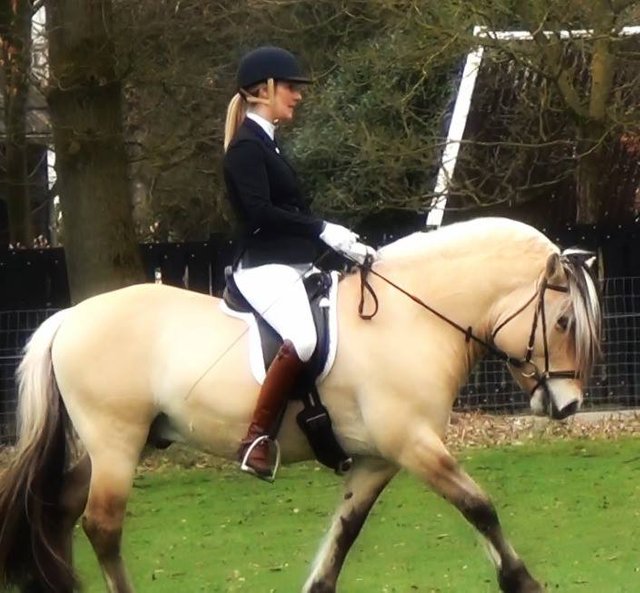
Of course these are just a few examples, but that's how you get an idea of what is meant by warmbloods and coldbloods. In general, we can assume that more experienced riders with competing biennials more often choose for a warm-blooded horse, while novice riders who mainly want to ride for fun often opt for a cold-blooded horse or pony.
This does not necessarily mean that a warm-blooded horse can not be a “family” horse, and a cold-blooded horse not a competition horse. There are of course always exceptions to the rule.
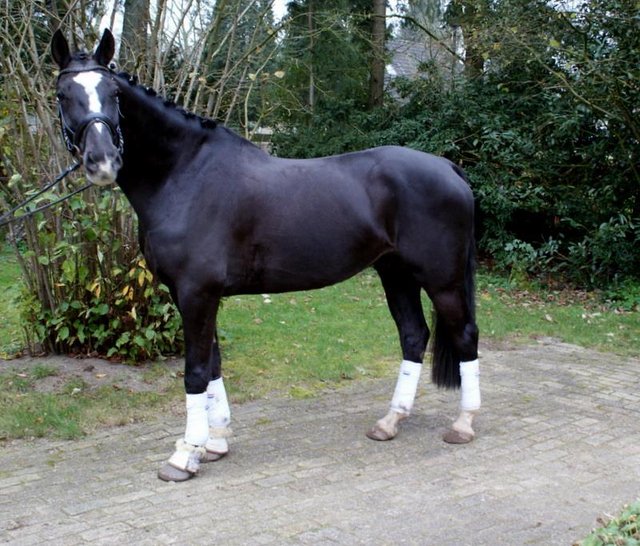
What age should the horse have?
You also have to think about the age of the horse or pony. If you are an inexperienced rider, it is a logical choice not to choose a young and inexperienced horse or pony, because who will learn who?
If you don’t have the experience yet, it is an impossible or very difficult task to be able to train a young horse that has little or no experience. For a starting rider it is therefore better to buy an experienced horse or pony who already knows “the trick". You will ultimately have a lot more fun and you can develop yourself much more.
The choice for a breed can therefore be determined on the basis of which objective you have with the horse or pony, and which ambitions.
For example, if you want to make a nice ride in the forest a several times a week, and you don’t have high competing ambitions, then a cold blood might be a horse or pony that suits you. Do you have competition ambitions and are you already a more experienced rider? Then you might choose a warmblood.
Of course, it’s also important what you like in a horse for yourself. If you can let everything weigh a little bit in your decision, then you always make the right choice. Of course it’s also a question of trying different breeds. You have to decide for yourself what you like and what your ultimate goal is.
Looking for a horse or pony
Once you have made the choice in which breed suits you best and would like to buy, you can start looking out for a horse or pony. There is nothing nicer than looking out for a horse that might be your own horse, but before that happens there are still a lot of things that you have to keep in mind.
The search for a horse or pony usually begins over the internet during this time. Here you will find a large selection of horses and ponies that are offered for sale by private owners or professional stables. But how do you separate the good ones from the bad ones?
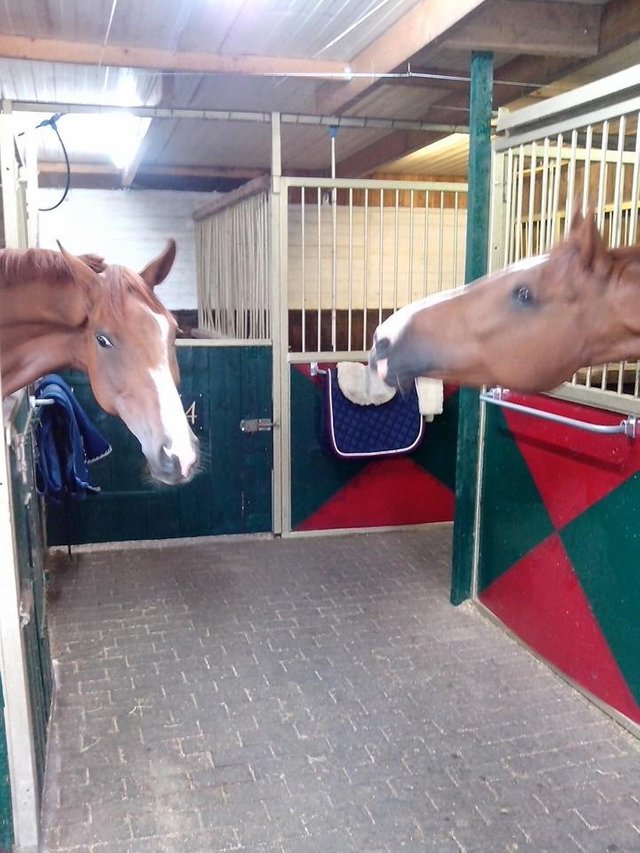
And how do you know for sure that you will look at what is promised in the advertisement? Please read on because i’m going to tell you what is really important if you want to buy your own (maybe first) horse. You can start by visiting the larger and well-known “horses for sale” sites.
Some well-known and large sales sites are:
On these websites you can find the largest selection of horses and ponies online. With the filtering in the search engines on these sites you already exclude a lot of uninteresting horse advertisements, and in that way you make the search for a horse a lot easier. Some terms that you can filter on are:
- Sex
- Age
- Size
- Level
- Price class
Once you have done this you keep a "pure" list from where you can start your search. This of course does not mean that all ads that remain will meet your requirements, but you can easily find what appeals to you.
In most cases people first look at the pictures. That’s normal but do not allow yourself to be seduced or deceived. A photograph gives a first impression of course, but can also give a distorted image. Because we are still in the searching phase, it’s not a problem to store all ads that appeal to you in terms of photo or to keep them separate.
Read the sales text carefully
It’s important to read the text in the ad. Why? For a number of reasons. By means of the text in an advertisement you can read how the seller is committed to the horse or pony that is offered for sale.
You also learn more about the character of the horse or pony, details and any habits that the horse or pony might have. Does this appeal to you? Or do you have any questions? Do not fear to contact the seller.
Maybe there are things in the ad text that are not entirely clear to you, or maybe the text is incomplete for you. A seller of a horse or pony should want to speak with you about the horse, and answer your questions at all times. After all, a reliable salesman also wants his horse or pony to end up well, and may also want to know something about you.
Make a to-do list
If this is the first horse or pony what you are going to buy, then it’s wise to make a list of questions that you value to know. Prepare a list of questions in advance if they have not already been answered in the advertisement text.
You also have to keep in mind that you as a buyer, have an investigation duty. You will read more about this later in this article. An investigation duty starts with the first contact with the seller. Some examples of questions you can ask are:
- Did the horse or pony have injuries in the past? If yes, which one?
- Is the horse or pony suitable for a less experienced rider?
- Has the horse or pony bad (stable) habits? If yes, which one?
- How long did you own the horse or pony?
- Is it possible to have a trail period?
Maybe there are some terms such as "stable habits" or "trial period" not clear to you, but you will read more about this below. On the basis of these questions to the seller you can make a selection in your search for a horse or pony. Why you should know these things?
Did the horse or pony have injuries in the past? If yes which one?
If a horse has had an injury in the past, then that does not necessarily have to be serious. Injuries that often occur in horses and ponies are tendon injuries and /or back problems.
Based on the seriousness of this injury you should ask yourself if you want to start with this. An injury to the tendons or to the back of the horse or pony can remain a weak spot. Depending on the plans you have with the horse, you should therefore make a choice whether you want to start with this or not.
Is the horse suitable for a less advanced rider?
If you are a starting rider, this is a very important question. Not every "good" horse can cope with the beginners mistakes that starting riders can sometimes make.
Consider for example, the balance that you have in the saddle or the leg position. Some horses become nervous of an unstable leg position or from the fact that the rider does not yet have an independent seat. The seller can estimate this as no other how the horse will react to this.
Has the horse or pony bad stable habits? If yes which one?
You will hear this question and statement more often in the search for a horse or pony. By a bad habit we mean a "bad behaviour" or also a "bad stable habit".
The most common bad habits are cribbing and weaving. With cribbing, the horse swallows in air by securing his teeth on a feeding crib or a stable door. This can be harmful to the horse and can even cause colic, but this has never really been proven.
The 1 says that a horse is cribbing because he has stomach problems, and the other says that he has stomach problems from cribbing. Weaving is the constant rocking on the left and the right leg, and causes problems on tendons, ligaments and joints. It’s up to you which choice you make in it, but in general you can say that these are "bad habits".
How long did you owned the horse or pony?
You can deduce a lot from this question. Has the seller bred the horse himself? Or was the horse purchased a few years ago? And in what timeframe? You have to ask yourself why this horse or pony is offered for sale. Is there no click with the rider? Or is it just because of termination hobby? These are all questions with which you will soon be able to make a choice.
Is a trial period possible?
Most sellers are not fond of a trial period, and this is why. For example, you can take the horse for a two weeks trial, but it seems that there is no click between you and the horse, so you return the horse to the seller.
The seller has no idea what happened to the horse during this period, while this is still under his responsibility. Insurance technically there is no purchase agreement yet at a trial period, so this is very difficult to cover.
What you can do for example, try to agree with the seller to arrange a trial at his home. This way you can get to know the horse or pony better, and you have more time to get used to each other and to see if the click is really there.
Has the horse a medical exam? If so, what where the findings?
It’s important to know whether the horse has been medically approved in the past. This may have been a clinical and/or radiographic assessment. Ask whether the horse was approved at the time (what clinic) and whether there were any deviations or remarks on the report. What the difference are between a clinical and X-ray assessment, i tell you later in this article.
Can the horse be medical inspected?
This is an important question. It’s highly recommended to have a horse or pony that you purchase approved by an independent and chosen veterinarian. Does the seller not agree with this?
Then you have to ask yourself whether you want to start whit this. With an "inspection" is meant a “purchase medical inspection” that makes it clear to both parties that the horse was in a healthy condition at the time of the purchase. Clarity for both parties and prevents disappointments afterwards.
The visit for buying a horse or pony
Now that you have been able to make a choice in the horses or ponies that you would like to buy, you can make an appointment with the seller for a visit.
Do not try to schedule too many visits in one day, this only confuses the choice that you have to make later. It’s important to be well prepared for a first visit to avoid disappointments afterwards.
Below is a list which you can keep an easy sequence:
- Acquaintance with the seller
- Explain what you are looking for and at what level ride
- Visit the horse for example at a grooming place
- Seeing the horse walk freely in a paddock
- Saddle the horse
- The riding of the horse by the seller
- The riding of the horse by the buyer
- Saddling and caring for the horse
- Putting the horse in the stable
- To view the studbook papers, passport and possibly medical exams
- Making a follow-up appointment if needed
Introduction to the seller
Meet the seller. This is nothing more than a human-to-human conversation, but you can get a lot out of this with your knowledge of people. Is it someone with whom you can easily go round the corner with?
Or is it a closed person who does not tell you very much? Of course this does not have to do anything with the fact whether the horse is suitable or unsuitable for you, but it can help you if you have to negotiate a purchase later.
Explain what you are looking for and at what level you are riding
Explain to the seller what you are looking for in a horse. Which requirements does this have to satisfy? And what exactly do you want and what not? You also need to inform the seller about the level of riding and the knowledge you have, so that the seller can already make an estimate whether the horse can fit you, or of course the other way around.
Watching the horse at a grooming place
With this you can already make up a lot of the character of the horse. Is he or she patiently waiting? Or is the horse nervous and impatient? Some horses can not "stand" on a lead rope or between the posts on a chain. Try to make contact with the horse and feel the horse. In this way you often set the first band between you and the horse.
See the horse move in freedom
After this you can ask the seller if he wants to show the horse in free movements. We do this because you can see the movements of the horse, and how he or she behaves in freedom.
Of course you can also see if the horse is not crippled. Will the horse easily be catched again? Or does he even comes to you? Try these kinds of things to make contact with the new horse or pony. You can ask the seller if you may lead the horse back to the barn. In this way you know whether it is a monotonous type horse, or an all-man friend.
Saddle the horse
Let the horse be saddled by the seller and pay attention. Some horses for example may suffer problems with tighten the girth. You really need to pay attention tot his, because this is something important to know.
Horses who have problems with tighten the girth, need a yentle treatment and a little walk before you climb in the saddle. Does the seller use special harness? For example a sharp bit? Or an special rein?
Ask why! There will be a good reason why the seller rides the horse with it. If the seller can explain why then this will prevent problems afterwards.
The riding of the horse by the seller
Never step directly on a strange horse. It’s nice to see how the horse is ridden and how it moves under the saddle. You can already derive a lot from this. Is this what you expected?
Having a horse ridden by the seller has a lot of advantages. You can not only see how the horse moves under the saddle, but you also get an idea of what it would look like for you.
Let the seller do a walk, trot and canter both on the left and on the right sides. So you know how the movements of the horse are, and if this is something that could suit you.
The riding of the horse by the buyer
Riding on your own is of course an important moment. Maybe you might be a bit nervous, because who knows maybe this could be your future horse or pony.
Try to make contact with the horse and ask the seller to hold the horse when you clim in the saddle. This gives confidence from horse to rider, but also vice versa. The most important thing is to feel in the walk of the horse. Feel how the horse moves under you. Do you feel comfortable?
Then you choose the next gait such as trot and perhaps canter. Do not do complicated things. The horse has to get used to you and vice versa. Make sure you have a good impression of the feeling the horse gives you and whether you find his comfortable. Do you feel safe? That is also an important factor.
Maybe the seller gives you some tips while you ride. Do not see this as critical. After all, the seller knows the horse better than you do. With some small tips, you may be able to line up more quickly which can benefit everything.
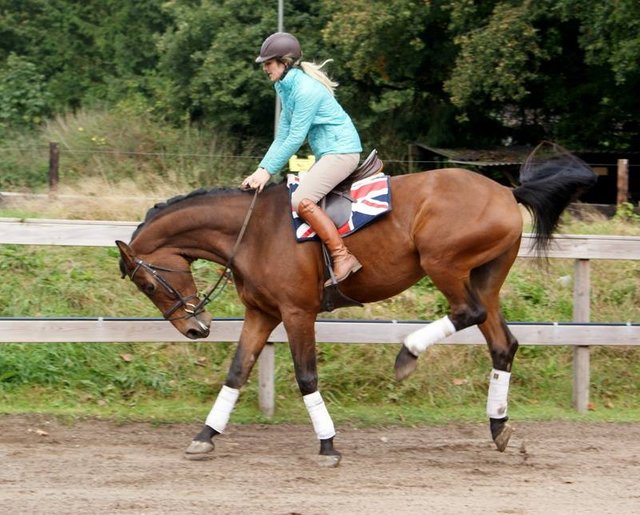
Saddling and caring for the horse
The saddling and care actually happens again at the grooming place or in the stable. Make sure you don’t see any deviant or crazy things. Is the horse breathing normal after the work he has done? Are tendons or ligaments thickened? Is the horse nice and relaxed?
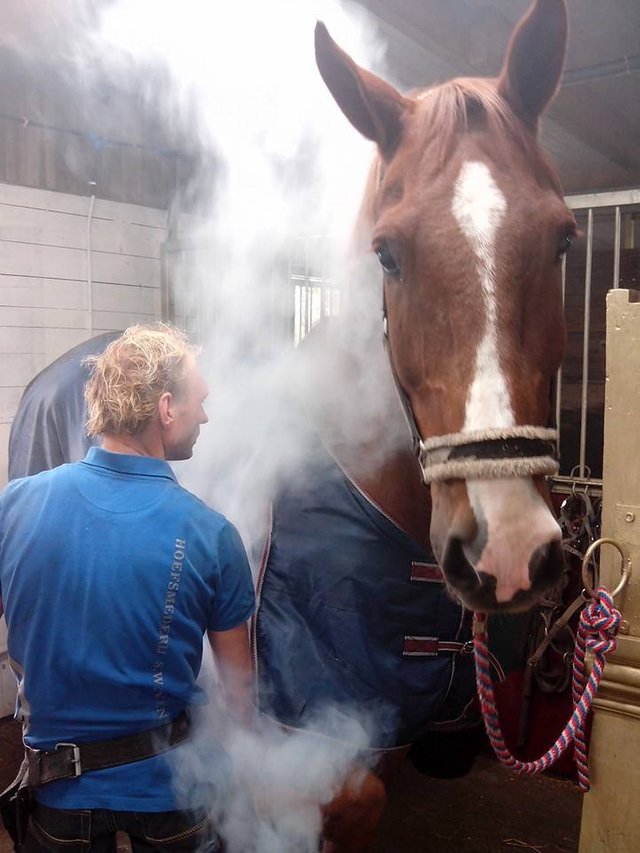
Bring the horse back to the stable
When you bring the horse back in his stable you can pay attention to any existing bad stable habits that you may not have noticed before or not have been told. A horse with a stable habit like cribbing or weaving will start with it immediately after you put him back in his stable.
To view the studbook papers, passport and possibly medical reports
As a starting horseman you may not know much about all the descendants on the studbook papers, but you can check whether the horse has had all mandatory vaccinations and whether there are any deviations on the test report.
Also check the chip number whether it matches all other documents present, and whether the age is correct. Nowadays, a medical insert is required in a passport. Check whether it is present, and whether any other things are listed on it.
Making a follow-up appointment
If everything has been to your liking regarding the horse, you can consider making a follow-up appointment with the seller.
Agree on what term you want this, and not unimportantly, ask yourself whether the seller keeps the horse for you as long as you wish, or whether he or she continues with the selling. Some sellers do not want to wait for a second appointment. Consult with the seller to avoid disappointments.
If you are going to watch a horse or a pony for a first viewing, ask the seller whether you can take photos or even better, make a video of riding. With a video you can look back at at it at home.
At the moment of riding there is a lot going through your mind, so it’s not at all crazy to be able to watch it back for yourself later on. If you have a video of riding you can also show this to your instructor or to someone who is also experienced in the purchase and riding of horses.
It’s important that this person also knows your experience and riding skills, so that he or she can sketch an objective picture. Two always know more than one. If you make a follow-up appointment, it is also wise to bring someone with you who has experience with purchasing horses and riding them.
After all, your instructor knows exactly what your riding level is, and whether the horse you are buying can fits you.
The second appointment
Once you have made the choice to go for a second appointment, things will come to you that might not have been relevant or unimportant at a first meeting. You already know some basic things about the horse, now it's time to take a more serious look at the matter.
You may want to make a choice after this second viewing and you will make the step to purchasing the horse. Nevertheless, there are a number of things that you still have to keep in mind, and which must be excluded. There several things that you have to ask before you go to a second appointment to see the horse.
Make another list for yourself that you want to ask the seller, or that you might do as a condition for yourself for the purchase of the horse or pony.
Examples for a list are:
- Do I want a trial period?
- Does the horse have to be inspected? And if so, how? And for whom are the costs?
- What price do I eventually want to pay for the horse?
- Is there a purchase contract?
Do I want a trial period?
Legally, you always have a trial period when it is a consumer purchase. Of course you want to make agreements about this in advance to prevent a long bad road. Under a legal trial period whe mean (for example), bad habits of the horse that shows after the sale has been concluded and which can be antedated until the purchase.
That is to say briefly that the seller was aware of, or could have been, the bad habit of the horse and the buyer not. This is called a "hidden bad habit" in legal terms. Earlier in this article we already discussed an investigation duty.
The buyer also has an duty to investigate, but this does not apply to defects that can not be detected with the eye on every moment. We also see a difference in legal trial periods between the purchase of a horse from private to private, and from professional (for example) a professional stable) to a private individual.
The times of a legal trial period between these two differ considerably. For example, the purchase of a horse from (for example), a private seller has a legal trial period of 6 weeks, while that for a sale of a professional stable to a private individual is a period of 6 months with a notification obligation of up to 2 months.
A legal trial period is always there but often if there is no agreement between the buyer and the seller, a lawyer could get involved. You have to prevent this at all times.
Consultation with the seller or a probation period of 14 days is possible. That means that you therefore fully purchase and pay the horse. If during those 14 days situations arise that do not correspond to what you bought the horse for, you have the guarantee that you can return the horse to the previous owner with full refund of the purchase price.
Does the horse have to be inspected? And if so, how? And for whom are the costs?
A purchase inspection is recommended at all times. An inspection does not depend on the final amount that the horse has cost upon purchase.
Even with a horse in a lower price range, the disappointment is enormous when it later appears that the horse is not healthy. The costs for a purchase inspection are usually for the buyer, unless otherwise agreed.
Often it is also agreed that the costs of rejection are for the seller, and upon approval for the buyer. These are agreements that you have to make between you and the seller with the sale.
Clinical inspection
A clinical inspection means that a veterinarian thoroughly tests and examines the horse on the clinical parts. A clinical inspection is a “at time inspection” but we can still learn a lot about the health of the horse with this inspection.
A clinical inspection is usually done with purchases amounts up to 4.500 dollars . This is not so much a standard in terms of amounts, but this has more to do with the insurance-technical part. More about that later in this article.
Some components of a clinical inspection are:
- Function of the heart and lungs at rest and after work
- Eyes
- Checking the teeth
- Feeling back and legs
- Steps and trotting on the hard surface
- Steps and trotting on the hard round-up both to the left and to the right
- Trotting away after bending the legs
- Trotting and galloping on the soft surface
- Taking a blood sample
Function of heart and lungs in rest and after work
You could imagine that the functioning of the heart and the lungs of the horse are very important. The veterinarian listens with a stethoscope if the heartbeat of the horse at rest and after work is normal.
He can also hear if the heart (for example) has abnormalities such as a heart noise. The lungs of the horse are also listened to with a stethoscope.
Eyes
The veterinarian taps his fingers near the horse's eye to see how responsive the eye is. The blink reflex is very important in this. The vet will also look into the eye with a bright light, whether the pupil reflex is normal and whether there are no abnormalities such as cataract or glaucoma.
Checking the teeth
Depending on the age of the horse, the veterinarian will check if the horse has been completely changed. Are there abnormalities of the teeth such as an under or above bite? Or is there too much space between the teeth (diastases)? The vet can also see if the horse suffers from (for example) caps on the molars or hooks on the theet.
Feeling back and legs
With the feeling of the back the vet checks whether the horse gives an abnormal reaction to the spine and the SI joint (hip joint). This could for example be a sign of Kissing Spines (vertebrae that tick each other).
This is a very painful and non-curable abnormality on the horse's spine. For a complete exclusion of this, an X-ray should be made but therefore there must be a clinical cause.
The legs of the horse are also checked for possible thickenings of tendons or fluid accumulations at the joints.
Steps and trotting on the hard surface
The vet will ask his assistant to step up and down and trot with the horse. This happens from the vet, and to the vet.
This is to determine the position of the legs of the horse, and to recognize the way of walking for the bending tests that are carried out later. For example, is the horse sensitive to his radius legs? This can often be seen when trotting on the hard surface.
Walk and trotting on the hard round-up
The assistant of the veterinarian will first lunge the horse in walk, and then in trot on the hard round-up of about 12 meters in diameter. On this basis it can be determined whether the horse can move correctly and without pain on a short turn on a hard surface.
This also has to do with the testing of the hoof joints with which the horse carries his weight. Lameness on the hard round-up can also bring to light a deviation in the back.
Trotting away after bending the legs
These are also called the bending tests and is one of the most important parts of a clinical inspection. This brings to light deviations of the hoof and the lower leg. The vet bends the legs 1 for 1 for about one minute.
After this the horse has to trot away on the hard surface over a distance of about 15 meters back and forth. The horse must be completely recovered from the bend after about 5 to 6 steps and must therefore show a smooth movement. This happens with all four legs of the horse.
Trotting and galloping on the soft surface
With this the entire musculoskeletal system of the horse is tested again. We look at abnormal movements in the canter (for example the changing from the hind legs) and the "traces" in the trot. After this, the heartbeat and lungs of the horse are again listened to or restored quickly enough after intensive work.
Taking a blood sample
The blood collection always takes place after the inspection, if the veterinarian has found the horse healthy. Blood is taken and this will be stored for 1 year at the vet.
This is to be able to show that no prohibited substances were present in the blood at the time of the inspection if problems should arise with the horse after the purchase. Officially, this blood sample has to be sealed by a notary, although this almost never happens.
Some parts of an X-ray inspection are:
- Front and side views of the ball joints
- Front and side views of the knee joints
- Front and side views of hocks
- Front and side views of the radius and hoof bone
An X-ray assessment contains about 21 X-rays from which the vet can determine whether the horse has joint disorders and if so, to what extent.
In the past, a distinction was sometimes made between whether it was a sport horse or a family horse, but now there is 1 standard. After all, every horse has to be healthy in order to function. The condition of the joints are indicated by the numbers 1 to 4. An indication for indicating any loose bone fragments that are present or also called OC or OCD. (Osteo Chondrose Disseanse).
The difference between an OC and an OCD is a big one. At an OC we usually only see a flattening of a joint, this does not have to be a problem. With an OCD we really see a loose bone fragment and is therefore, according to the location where it is, more serious in nature.
The designation of an X-ray assessment is as follow:
- 0 Clear or not present
- 1 Good
- 2 Acceptable
- 3 Not acceptable
- 4 Bad
What amount do I eventually want to pay for the horse?
The final purchase amount naturally depends entirely on what you want to spend. Of course you already knew what budget you had for that and you started to select it accordingly.
The seller knows that there must always be some margin in the asking price and the final sales price, so you can take that into account.
A realistic percentage for a bid from the buyer's side is to assume 10% of the asking price. Keep in mind that the seller will always make another offer, and that you can come out somewhere in the middle. Keep it realistic!
Is there a sales contract?
A sales contract is highly recommended. You can compose these together with the seller, but you can also download them completely via the internet.
Make sure that everything that might be discussed is included in the contract. It is also important that the contract is suitable for a consumer purchase. Some sellers choose to have the contract already signed before the purchase inspection (and thus the resolute factor) has taken place.
This is possible. It gives the seller more certainty that the buyer does not cancel the purchase at the last moment, and the buyer that the horse can no longer be sold to someone else. Make that the contract tells that the medical inspection is the decisive factor. Upon approval, the purchase can therefore continue, if the purchase is rejected the purchase will automatically be dissolved.
If you have been able to answer this list for yourself, then you are ready to go to a second viewing. Ask the seller in advance if you can be the first to ride the horse, because that’s how it will be if you have your own horse later. Make sure you bring someone who can guide you and give you tips while riding.
Also, someone with more experience will be able to estimate more quickly how the horse will be in character, and whether that matches with what you are looking for and what will suit you.
Riding during a second appointment
The driving will be a bit more extensive during a second appointment, because after that you might really make the choice. Try to do more exercises while riding, and watch how the horse responds to it.
What do you find important when you are riding a horse? And how does the horse react to this? Of course, it is not the intention to run fast. After all, the horse does not know you, and you do not know the horse.
A good exercise while trying the horse are relaxation exercises. Try to stretch the neck. Does the horse want to follow your hand? That says a lot about the relaxation and therefore also about the character of the horse.
Do not worry that you want to try everything in for example an hour, because that is not very useful. What you have to ask yourself especially and in the first place is whether you feel fine on this horse. Does the horse or pony have comfortable movements for you? And does it feel safe?
That is the most important thing for a second time riding a new horse. You have to build a bond with the new horse and that does not happen in an hour. Take the time for that and do not rush anything.
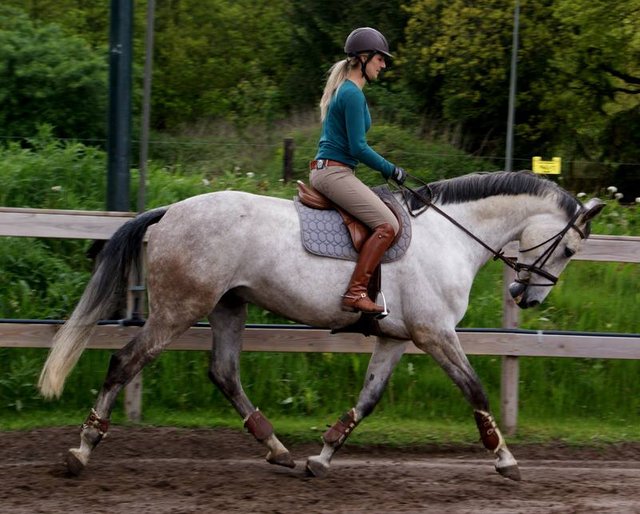
The purchase agreement, purchase inspection and other agreements
If you are just as enthusiastic about the horse after the second appointment, or maybe you want to take longer, then it is time to start negotiating the purchase price of the horse, the purchase agreement, and the purchase inspection.
The purchase inspection
Decide which inspection you want to have carried out and by which vet you want to do this. If the distance between your own veterinarian and the location of the horse are too far apart, then you can also choose to have the inspection carried out by a dependent veterinarian from the neighborhood.
The X-ray images can then be assessed later by your own veterinarian. After all, a photo is a photo. This is different for a clinical inspection. If you can not reach an agreement with the seller with which vet you want the horse to be inspected, choose a well-regarded veterinarian from the neighborhood.
The purchase agreement
In the purchase agreement all agreements that have been agreed between the buyer and the seller are listed. Consider the date of purchase, the purchase price and the resolutive condition of the purchase medical inspection.
Other appointments
This can might be other appointments you will have to make. For example, you have to think about transport to the clinic for the purchase inspection, who arranges that?
Will the horse be brought by the seller after purchase or will you pick up the horse yourself? How does the payment take place, do you want to do this in cash, or by bank transfer? These are all things that you better discuss in advance with the seller so that you will not face any surprises.
The arrival of the new horse or pony
If you have had this very important step, you can finally enjoy your own horse or pony. Yet there are a number of things that you have to take into account when the horse enters its new environment for the first time. You both need to get used to eachother, so try to make it as pleasant and quiet as possible. How do you do that best? Here are some valuable tips
What should you take into account when your horse arrives?
- Avoid a lot of people
- If possible, place the horse separately in your own meadow or paddock
- Feed limited until the horse is completely at rest
- Keep an eye on things
- Let the horse get used to his new routine and do not ride the first few days
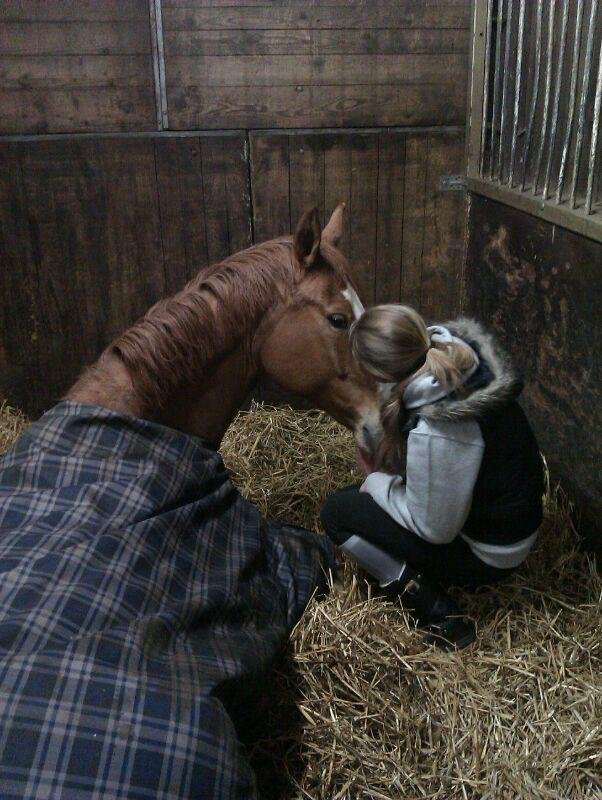
Avoid people's crowds
Of course it is exciting when you can finally welcome your own horse at home. There will probably also be a lot of people aware of the fact that you get your own horse or pony, and of course they all want to see it.
That is of course very nice, but it is better to keep the arrival of your horse quiet. Keep in mind that the horse comes in a new environment for him with new sounds, objects and rules.
It is important that the horse feels safe in his new habitat and you can create that yourself. For example, agree that the horse arrives at a time when it is quiet at the location. This gives the horse and you the chance to get used to all the new in peace, and at your own time.
If possible, place the horse separately in your own meadow or paddock
Depending on where you want to keep the horse, you have to take into account that your horse or pony is a newcomer in the group. It is certainly not wise to place the horse directly in a fixed herd of horses.
There is a hierarchy here. Because your horse has not yet been able to conquer a place in this herd, and because the smell is different, it could just be that he is not accepted.
Let the horse settle in a meadow or paddock for him alone, but so that he can see and smell his new friends and vice versa, of course. You obviously do not want your new horse to be wounded by other horses.
Feed limited until the horse is completely at rest
Once the horse has calmed down a bit and explored its new environment, you can slowly begin feeding. If there are several horses present, then there is a fixed feeding time.
Keep these as much as possible so that the horse can get used to the stable rhythm. It is also important not to feed too much if the horse is not completely calm.
The horse may startled and get constipated by the stress and that is the last thing you want of course. Unlimited feeding hay is always fine if the horse is used to it.
Keep an eye on things
It is wise to keep an eye on the first days that the horse is in its new environment. Keep an eye on the daily things and stay close.
So you can quickly intervene if things do not go as they should, or if you notice that the horse is stressed or panicky. Generally speaking, it is fine if horses have similar species around them, but if the new horse for example comes to stand alone, it is wise to observe.
Let the horse get used to his new routine and do not ride the first few days
Because the horse has to get used to a lot of new things, it may be that his character changes temporarily. Try to avoid willing to ride immediately in the first days after the horse's arrival at its new location.
Because the horse may have stress and does not know his new environment properly, annoying situations can arise during riding causing the trust of you and your horse to be damaged.
Fun and good exercises that you can do and with which you build a trust bond with the horse (for example) are lunging, walking, and caring. That way the horse will get the chance to get used to you, to get to know you and to trust you.
Now that you know everything about buying a horse, nothing stands in the way of a bright future for you and your new horse. It is important to be well prepared to purchase a horse, otherwise the disappointment in the future will be many times bigger. Buying a horse is the best thing there is, and it should stay that way.
This article is meant to help people on their way to the purchase of a horse. There are so many factors that you have to keep in mind so you almost forget about the fun which certainly should not be the intention. You not only buy a horse, but in many cases also a friend and a family member. I wish you many happy years with your new best friend!
“As a professional rider, instructor and seller of sport horses I still encounter it daily. People who want to buy a horse but have no idea where to start. Often it is an impulsive thought of these people because they have no idea what is involved in the purchase of a horse”.
“These people often fall to prey to sellers who are not so keen on the guidelines for selling horses and their consequences”.
“Often such stories not only end in a financial drama, but also in an emotional drama. Because the horse trade has been flooded for years with rogue traders and sellers, it is of the utmost importance to inform the less experienced people about how they can do well and what they should keep in mind when buying a horse”.
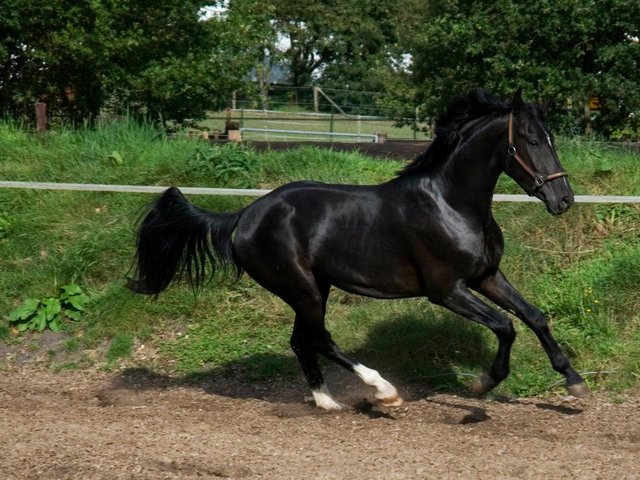
Another thing to note: Always watch out for scammers! It is not uncommon that a quick buy-and-sell money grabber will try and dope the horse to make the significantly more placid and calm than they actually might be.
Downvoting a post can decrease pending rewards and make it less visible. Common reasons:
Submit
Absolutely true @horzymandias! Thank for your comment!
Downvoting a post can decrease pending rewards and make it less visible. Common reasons:
Submit